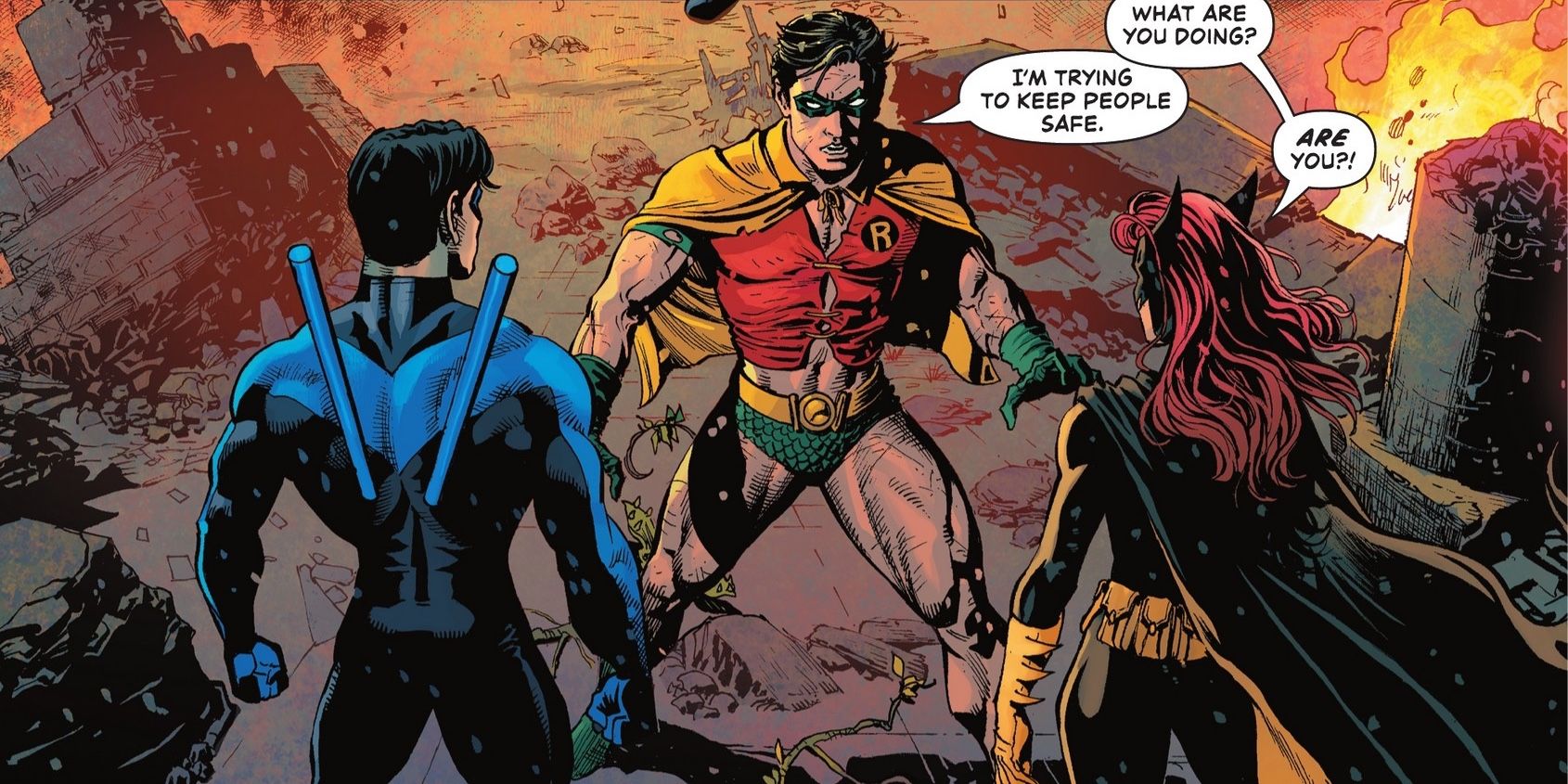Warning: Spoilers for Task Force Z #7!
The Bat-Family member known as Red Hood has always had a strained relationship with his bat-brother, Nightwing, and after a terrifying nightmare depicts Jason Todd as someone lesser than his colleagues, DC Comics reveals what Red Hood truly thinks about Dick Grayson.
Revealed in the opening pages of Task Force Z #7, by Matthew Rosenberg, Jack Herbert, and Daniel HDR, this series has been focusing on Red Hood aka Jason Todd as he leads a group of undead villains dubbed Task Force Z. A team secretly overseen by the Batman character named Two-Face, the members of Task Force Z have been taking a new drug called Lazarus Resin which helps keep Jason’s zombies alive and kicking just enough to help him to carry out their duties without getting eaten alive.
Experiencing more than a few ups and downs as of late as he tries to wrangle his crew after being betrayed by one of their own, Jason has understandably had a hard time adjusting and completing the tasks at hand. Given a dose of Lazarus Resin without his implicit knowledge, all of these factors — along with the idea that Jason himself is technically a man come back from the dead — lay heavy on Red Hood’s psyche, resulting in a nightmare that brings Nightwing (and Batgirl) into the mix.

Showing readers Jason’s subconscious where he brutally fights a bevy of Batman rogues while dressed as Red Hood, this nightmare immediately feels off in a way that isn’t made apparent until Nightwing and Batgirl arrive on the scene. Suddenly dressed in a far too small version of his old Robin costume, Jason is forced back into a junior role, implying that while around these senior Bat-Family members, he feels lesser and more out of place than ever. Telling them that he’s only “trying to keep people safe” by violently attacking these Batman villains, Nightwing and Batgirl then point out that Jason’s killing of these baddies is part of the problem, and it’s here, as the zombie-like decaying faces of his fellow vigilantes are exposed, that Jason reveals how he really sees Nightwing.
In a sense, Nightwing (and Batgirl for that matter) are the heroic ideals Jason believes he’s failing to live up to, with “Nightmare Nightwing” also acting as a threatening and oppressive force in this dream, insinuating that Jason is not behaving right in his current role as a crimefighter. Furthermore, Jason reverting to Robin in Nightwing’s presence is a perfect subconscious slip in this regard, making sense that Jason sees Dick in this conflicting light as Jason has always existed in Dick’s shadow as the second, less-fondly remembered Robin. It then becomes particularly interesting that in a guilt-based nightmare such as this, Jason envisions Nightwing and not Batman giving him a stern talking to. But what does this mean? Does Jason consider his fellow bat-sidekicks — Nightwing especially — more of a commanding and/or reliable voice in his life than his surrogate father? Could Jason not handle criticism coming from Batman but would hear it more readily coming from his “brother” in arms? The answers are a bit vague as Jason’s nightmare ends, but it’s still an intriguing way to look at Red Hood’s relationship with Nightwing, and how he perceives him as a person.
So although Red Hood and Nightwing are on better terms in real life than this nightmare suggests, their tumultuous relationship is still one that’s a work in progress. Red Hood might see Nightwing as the antagonist at times, but at least these problems are all in his head… well, mostly.




